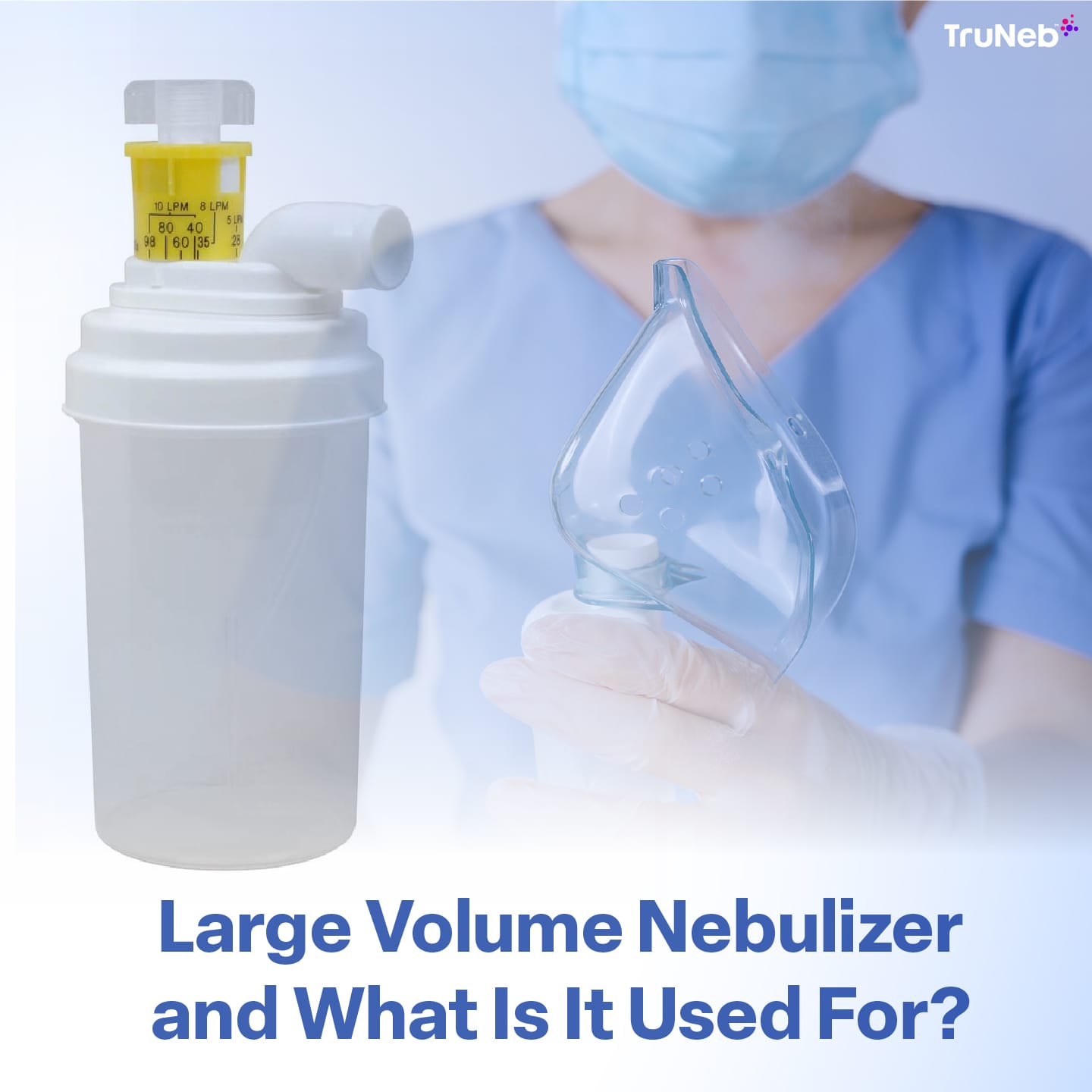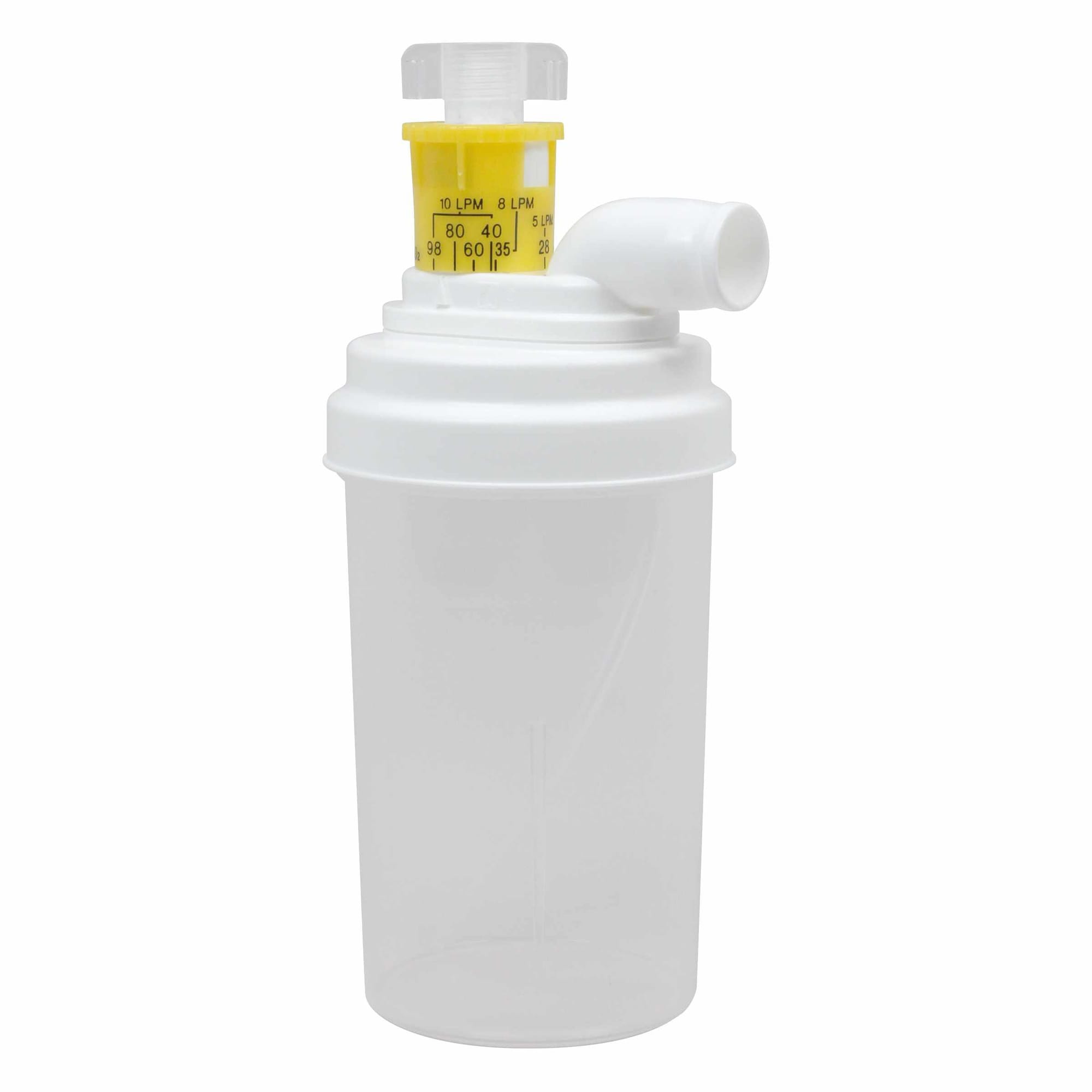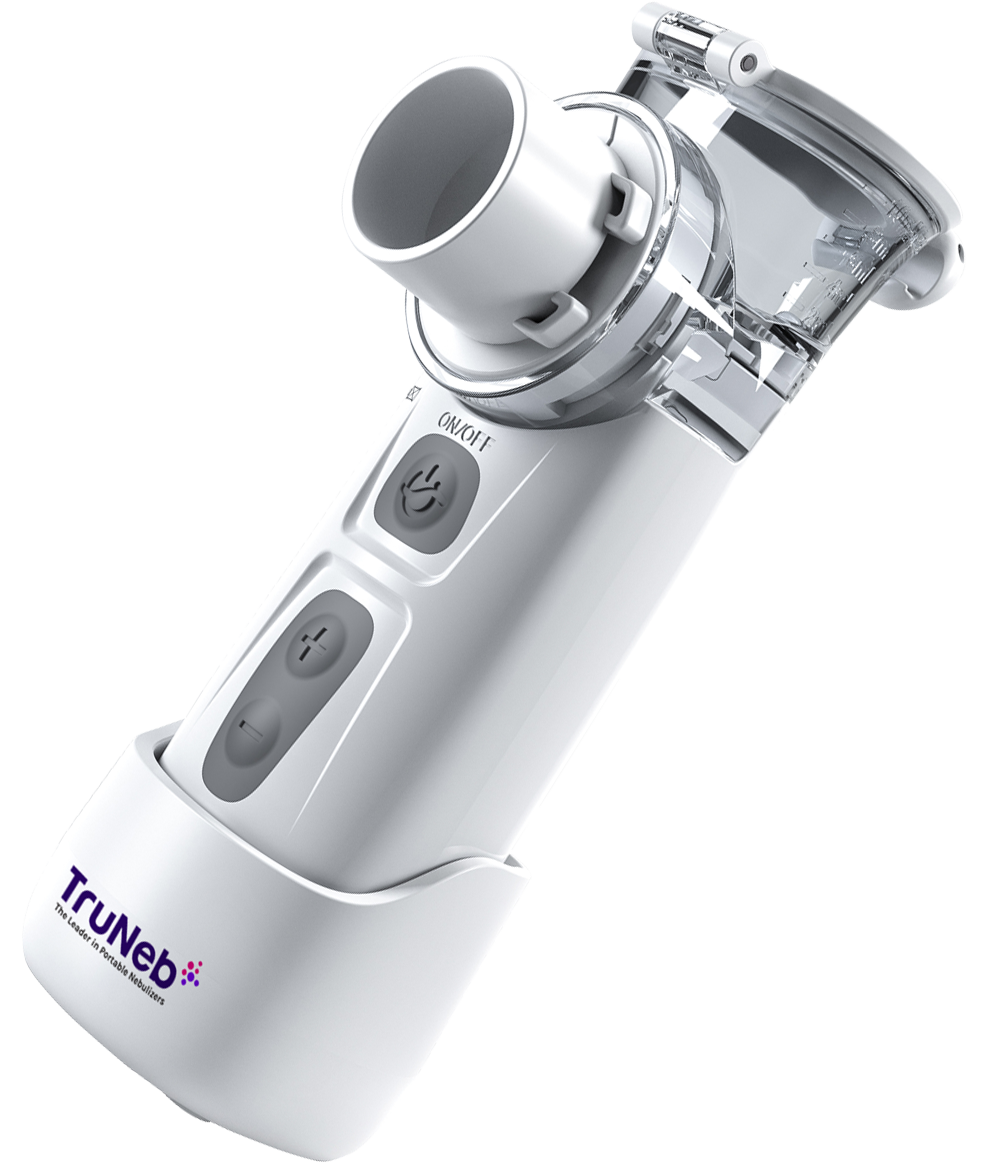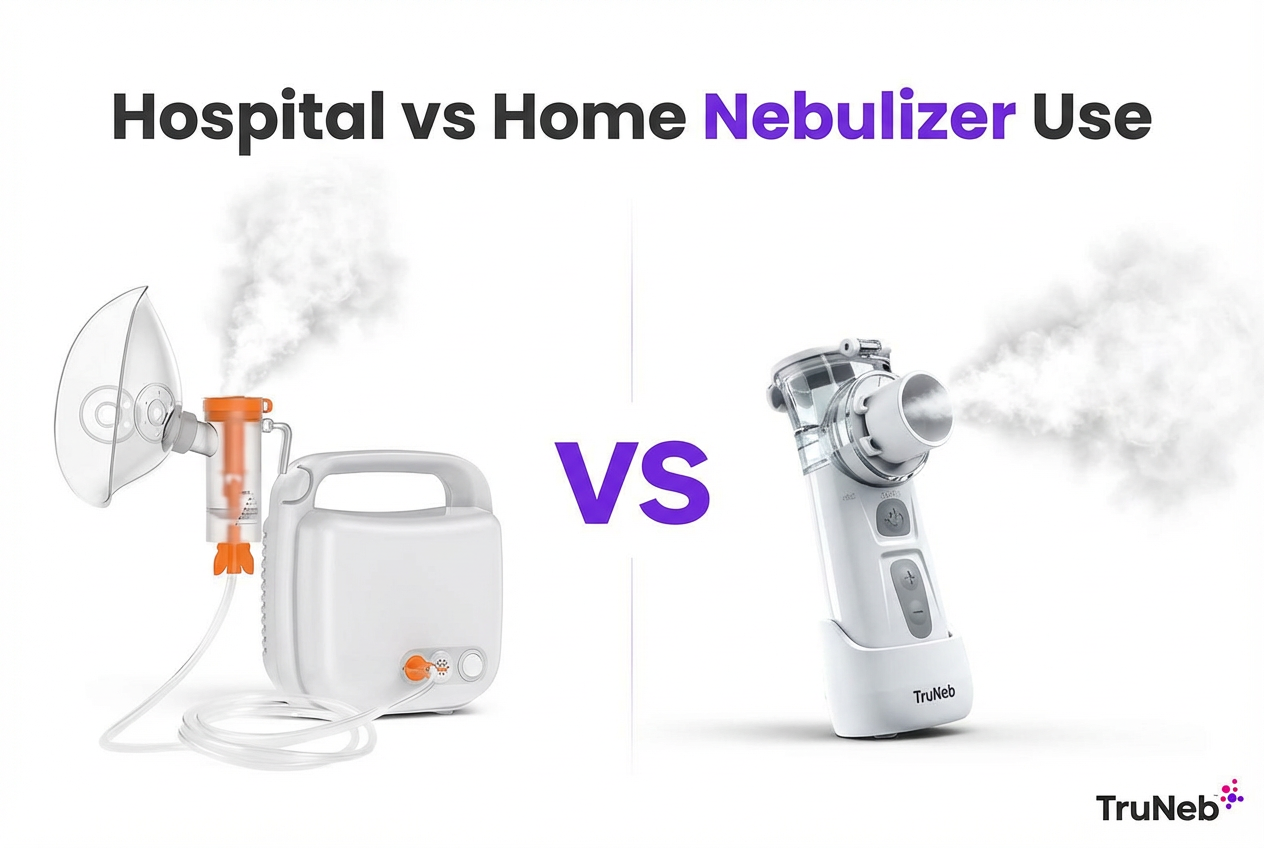On this page

Respiratory support devices play an important role in managing and treating various illnesses and conditions. For specific types of patients in a clinical setting, these devices help people breathe more effectively. A large volume nebulizer (LVN) falls into this category. But what is a large volume nebulizer exactly? Let’s dive into what LVNs are for.
Large Volume Nebulizer
A large volume nebulizer, also known as a high-flow nebulizer or continuous nebulizer, is a specialized device designed to deliver high flows of humidified medical gas, usually oxygen, to patients who require respiratory support. Unlike standard nebulizers that are primarily used for medication delivery, large volume nebulizers focus on providing moisture to the airways and assisting with breathing.
Key features of a large volume nebulizer include a high-flow oxygen source, a humidification chamber, and a nebulizer cup. The device is capable of delivering oxygen at flow rates ranging from 6 to 15 liters per minute, which is significantly higher than the flow rates used in standard nebulizers. This higher flow rate allows for better humidification and oxygen delivery to the patient’s airways. Some LVNs use a Venturi regulating ring at the cap to deliver oxygen percentages ranging from 21% to 100%.

What Is a Large Volume Nebulizer Used For?
Here are some examples of scenarios where patients might need the support of a large volume nebulizer:
- A young toddler is brought into the emergency room for croup and has swelling in their trachea. He is set up on a continuous cool mist aerosol via a large volume nebulizer to breathe in.
- A patient with a new tracheostomy is set up with a trach mask connected to a large volume nebulizer. It is delivering humidified oxygen to ensure the airway and secretions do not dry out.
- A burn victim has severe burns to the face. To protect the delicate airways and provide humidification, the patient is set up with a face tent connected to a large volume nebulizer. The face tent creates a moist, oxygenated environment around the patient’s face, helping to prevent further damage to the airways and promote healing.
- A patient with advanced lung cancer is receiving palliative care. They are set up on a large volume nebulizer to deliver humidified oxygen and help alleviate symptoms of shortness of breath and improve comfort during end-of-life care.
How Large Volume Nebulizers Work
Large volume nebulizers deliver humidification and high-flow oxygen to a patient’s airways. The device draws in oxygen from a high-flow source and passes it through a humidification chamber. Inside the chamber, the oxygen is humidified, creating a warm, moist gas that is more comfortable for the patient to breathe.
The humidified oxygen then flows into the nebulizer cup, where it is mixed with a small amount of water or saline solution. The nebulizer cup contains a baffle or diffuser that helps to break up the water into small droplets, creating a fine mist. This mist is then carried by the high-flow oxygen stream and delivered to the patient through a mask or nasal cannula.
The oxygen delivery and concentration can be adjusted based on the patient’s specific needs. Large volume nebulizers can deliver oxygen at concentrations ranging from 21% (room air) to 100% (pure oxygen). The flow rate can also be adjusted to ensure that the patient receives the appropriate amount of humidified oxygen to support their breathing.
Advantages of LVNs
Large volume nebulizers offer many advantages for patients in the clinical setting like:
1. Humidification of air and oxygen
- Delivers warm, moist oxygen to the patient’s airways
- Prevents drying and irritation caused by prolonged exposure to dry oxygen
- Particularly beneficial for patients requiring high flow rates of oxygen
2. Improved patient comfort and compliance
- Breathing in warm, moist air is more comfortable than inhaling dry, cool oxygen
- Increased comfort helps patients better tolerate respiratory therapy
- Leads to improved compliance and better overall outcomes
3. Reduced risk of airway dryness and inflammation
- Maintains proper humidification, keeping airways moist and healthy
- Reduces the risk of complications such as mucus plugging, coughing, and increased susceptibility to infections
- Helps prevent airway dryness and irritation
4. Easy way to deliver higher flow oxygen
- Can deliver oxygen at flow rates ranging from 6 to 15 liters per minute
- Higher flow rates compared to a standard nasal cannula
- Ideal for patients with severe respiratory conditions who need a high concentration of oxygen to maintain adequate oxygenation
Large Volume Nebulizers on the Market
LVNs are generally only used in a clinical setting, like a hospital. Here are some common models used by medical professionals:
2. AquaPak Prefilled Nebulizer
3. CuraPlex Large Volume Nebulizer
An Important Respiratory Support Device
Large volume nebulizers play an important role for patients in medical settings. By delivering high flows of humidified oxygen, these devices help to prevent airway dryness, reduce inflammation, and improve patient comfort and compliance. LVNs are particularly beneficial for patients who require high oxygen flow rates, such as those with severe respiratory illnesses or those recovering from surgeries or injuries affecting the airways.
TruNeb™: A Leader in Portable Nebulizers
TruNeb is the leader in innovative nebulization. Our portable mesh nebulizer is the perfect companion to your jet nebulizer or inhaler. Take it with you on the go and enjoy a virtually silent breathing treatment that is done in just minutes. Learn more about our portable nebulizer.






